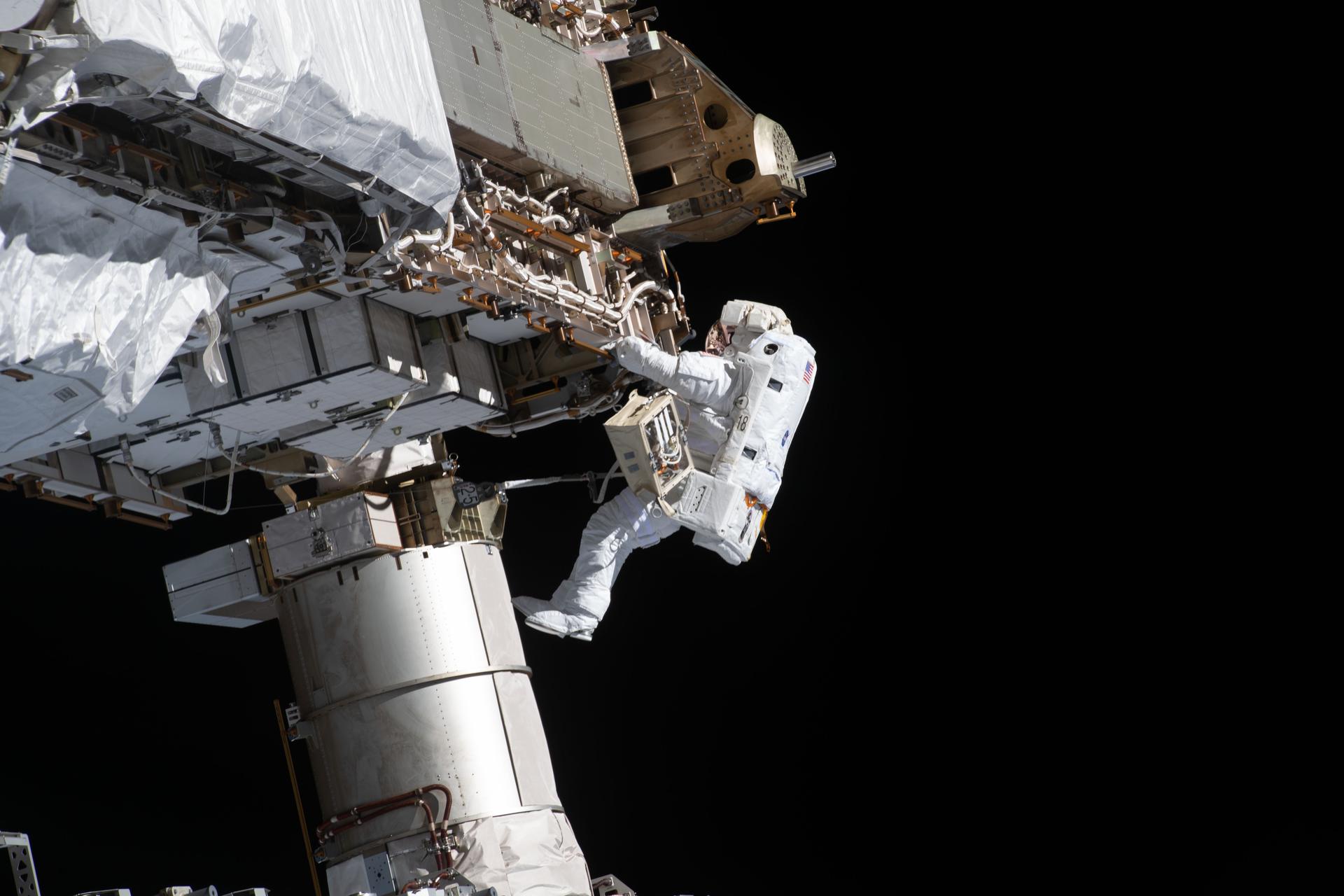Two NASA astronauts will conduct the fifth spacewalk of the year Saturday, March 13, to complete several systems upgrades to the International Space Station. Live coverage will begin at 6 a.m. EST on NASA Television, the NASA app, and the agency’s website.
Expedition 64 Flight Engineers Michael Hopkins and Victor Glover are scheduled to exit the station’s Quest airlock about 7:30 a.m. for a spacewalk planned to last approximately six and a half hours.
During the spacewalk, Hopkins and Glover will vent early ammonia system jumper cables and relocate one of them near the Quest airlock in order to reconnect the jumper cable to the current cooling system, increasing its efficiency. The duo also will connect cables for the Columbus Bartolomeo payload platform, continuing work from a Jan. 27 spacewalk, and replace a cable for an amateur radio system. Additionally, the astronauts will replace a wireless antenna assembly on the Unity module, install a “stiffener” on the airlock’s thermal cover to provide additional structural integrity, and route cables to provide ethernet capabilities for two high-definition cameras on the station’s port truss, or “backbone.”
Glover will wear red stripes on his suit as extravehicular crew member 1 (EV 1) during what will be the fourth spacewalk of his career. Hopkins will be EV 2 and wear a suit with no stripes during what will be his fifth spacewalk. Hopkins will wear a high-definition camera on his helmet to provide clear views of the Columbus connectors. The mating of these connectors is one of several tasks deferred from previous spacewalks to allow astronauts to finish installing modification kits for new solar arrays set to launch later this year.
In November 2020, the International Space Station surpassed its 20-year milestone of continuous human presence, providing opportunities for unique technological demonstrations and research that help prepare for long-duration missions to the Moon and Mars while also improving life on Earth. To date, 242 people from 19 countries have visited the orbiting laboratory that has hosted nearly 3,000 research investigations from researchers in 108 countries and areas.
For more information about the International Space Station, including its research crew, please visit:
-end-
Monica Witt
Headquarters, Washington
202-358-1100
Monica.j.witt@nasa.gov
Leah Cheshier
Johnson Space Center, Houston
281-483-5111
leah.d.cheshier@nasa.gov

























